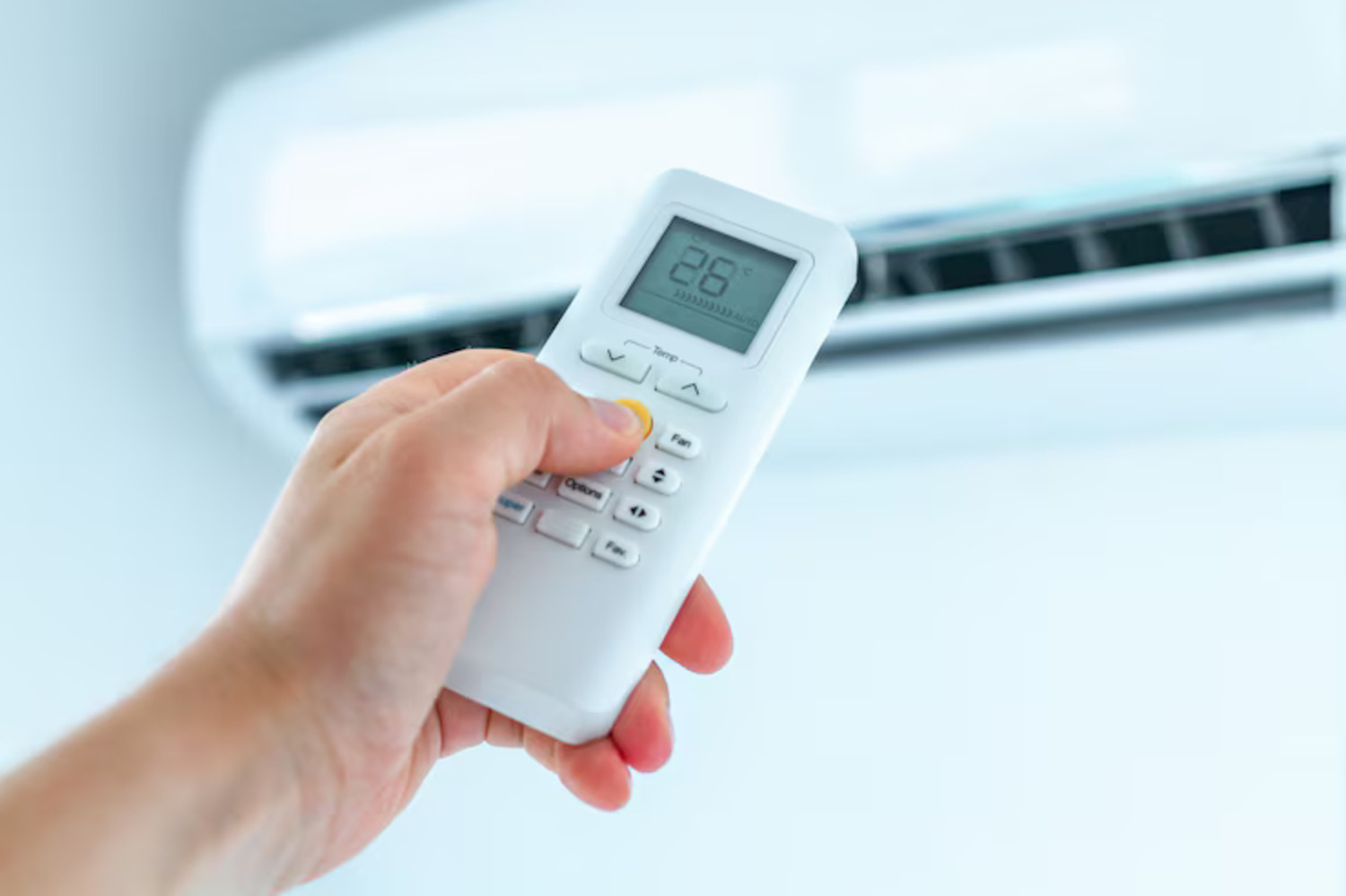When your AC suddenly won’t turn on during a hot summer day in Dover, the discomfort sets in fast. Everyone depends on their system to kick on right when it’s needed, so when there’s no response, it can become a stressful situation. You might start wondering if it’s something simple or a bigger issue that needs immediate help. If you’ve already checked the remote and flipped the thermostat up a few degrees, only to still feel nothing, there’s probably something else going on.
This kind of situation isn’t unusual. In many homes across Dover, it’s common to face AC issues as temperatures climb through July. There are several possible causes behind a system that doesn’t want to start. Knowing where the problem might be coming from can save time and frustration. Here are some of the main reasons your unit might not be turning on and why it makes sense to call in our professionals for an accurate diagnosis.
Check the Thermostat
The thermostat might seem small, but it plays a big role in whether your AC runs. If the thermostat settings are incorrect or if the device itself isn’t working, it won’t signal your unit to kick on.
Here’s what could be happening:
– It’s not set to “cool” mode, or the temperature setting is higher than the current indoor temperature. That can easily stop the system from activating.
– The screen is blank or unresponsive. That may mean the batteries are dead or there’s a wiring issue inside the unit.
– Its placement is affecting performance. If the thermostat sits near a heat source, like a window getting full sun, it might read a warmer temperature than the rest of the house. That throws off the actual reading and prevents consistent cooling.
Because the thermostat is the command hub for your system, even a small malfunction can disrupt the entire cooling cycle. If you’ve already reset it and nothing changes, it might be time to let our technicians take a look and sort out what’s really causing the breakdown.
Inspect the Circuit Breaker and Power Supply
When power cuts off to the AC system, it often leads straight back to a breaker or external switch. An overloaded circuit can trip without you realizing it, especially during a stretch of high heat when multiple appliances are in use.
Check the following areas if the AC won’t turn on:
– The circuit breaker box first. If the specific switch controlling your AC has flipped to the off position or is stuck in the middle, reset it.
– Outdoor AC disconnect box. Many homes have a switch located near the outdoor unit. Make sure it hasn’t been turned off.
– Power cord and connections. Sometimes, a plug can loosen or be damaged. Make sure all connections are secure and intact.
If power isn’t the issue, something more serious inside the unit could be stopping the system from starting. Catching these signs early reduces the chance of added damage, and having our professionals check the electrical connections and breakers can keep your home both safe and cool.
Examine the Air Filter
Air filters do more than just stop dust. They help your AC breathe. When a filter gets clogged, it restricts the airflow, making it harder for the system to run effectively. In some cases, it can cause the unit to shut down entirely to avoid overheating.
Homeowners in Dover often overlook this step, especially early in the summer when the system is first being used again. But filters can begin building up debris every time the AC runs.
Warning signs can include:
– Excess dust collecting around vents
– Weak airflow from the registers
– A noticeable drop in cooling performance
If it’s been a few months since the last replacement, there’s a good chance the filter is overdue for a change. While it sounds simple, ongoing airflow blockages can lead to bigger problems if left unchecked. If replacing the filter doesn’t restart the system, there could be further airflow issues that need the attention of our technicians.
Assess the Outdoor Unit
The outdoor unit plays a key role in the AC system. If it’s not working right, the entire system can shut down or fail to start. During peak summer in Dover, outdoor units are under heavier strain, and a problem out there can make it feel like the whole system is broken.
Start by looking at the area around the unit. Tall grass, weeds, or heavy plant growth can limit airflow. If leaves or branches have built up around it, they might block the fan or affect the coils. Units need ample breathing room to do their job properly. Grills, fences, or gardening tools placed too close to the condenser can also affect cooling.
Here are other outdoor signs that might point to the cause:
– Loud rattling, buzzing, or humming sounds when starting
– A visible ice build-up along the coils, even in hot weather
– The fan not spinning even though the thermostat is calling for cool air
– Dented, punctured, or cracked panels
The outdoor unit holds some technical components that shouldn’t be tampered with. Internal motors, capacitors, and compressors are all housed here. When one of these pieces fails, the unit will usually stay off even if everything indoors looks fine.
This is where it helps to have eyes on the whole system. If there are power issues or visible damage outside, our technicians can track the source and correct it without risking further harm to the equipment.
Watch for Internal Damage and Leaks
If your AC won’t power on and everything outside and at the panel seems normal, the issue could be inside the indoor unit. Air handlers and evaporator coils are known to develop problems, especially during periods of heavy usage like late summer.
One of the more noticeable signs is water leaking around the base of the indoor system. This usually means the drain line is backed up or the evaporator coil has frozen and is now thawing. Constant moisture can impact other components like wiring, sensors, and boards, which may prevent the unit from starting up again.
Listen for:
– Strange mechanical noises when the inside unit tries to start
– Clicking sounds that come and go without airflow
– A delay from thermostat click to fan or cool air delivery
– Moisture on or around the unit even when it hasn’t been humid indoors
Even if the unit is clean on the outside, internal wear could mean the motor or fan isn’t working properly anymore. Wiring issues behind the access panel can also stop the entire system. At that point, only a full inspection will isolate the issue.
These problems can be subtle. Some homes in Dover start the summer off fine but then start noticing spotty operation or sudden shutdowns later. If you’ve ruled out the more obvious reasons, it’s often a sign that something inside needs professional attention.
Keep Your Dover Home Cool and Comfortable
When your AC won’t turn on during a stretch of hot weather, every minute counts. Delaying service or guessing at the cause can lead to more stress and damage. These systems are built to last, but they still need attention when things go wrong. If your thermostat, power source, air filter, or outdoor unit checks out, don’t wait for the heat indoors to get worse.
Getting to the bottom of the issue early can prevent expensive repairs later. Regular upkeep can help avoid breakdowns, but when problems do pop up, it’s best to have our professionals take over. With the right tools and experience, our technicians can find the issue, fix it safely, and get your home back to a comfortable temperature quickly.
AC repair in Dover doesn’t have to be complicated. It just has to be done right. You’re not alone when your system stops working. Whether it’s a thermostat issue, airflow problem, or internal part failure, the right help is just a call away.
Working with Air Doctorx Heating and Air Conditioning means you can rely on experienced help when unexpected breakdowns occur during the hot summer in Dover. If you need AC repair in Dover to quickly resolve your issues and restore comfort at home, our professionals are ready to assess and fix the problem safely. For a quick estimate or to book a service visit, please contact us today.


